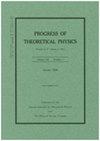Chapter II Superfluidity in Neutron Star Matter and Symmetric Nuclear Matter
引用次数: 36
Abstract
Nucleon superfluids which are realized in neutron star interior and symmetric nuclear matter are studied with use of realistic nuclear forces, in the density domain from the subnuclear region to about 3ρ_0 (ρ_0 being the nuclear density). It is shown that characteristic aspects of nuclear forces manifest themselves in the appearance of several kinds of nucleon superfluids, which strongly depends on the density ρ. In this chapter emphasis is put on the pairing correlations where strong noncentral (tensor and spin-orbit) forces play important roles. A theoretical framework applicable to the nonzero angular-momentum pairing including the coupling due to tensor force is given by extending the usual BCS-Bogoliubov theory for the ^1S_0 pairing (the zero angular-momentum one). This formulation has been applied to the ^3P_2+^3F_2 pairing in neutron matter (the dominant component of neutron stars) and the ^3S_1+^3D_1 pairing in symmetric nuclear matter. In the former case, although spin-orbit force mainly contributes to the ^3P_2 attraction, the tensor coupling with the ^3F_2 component assists to realize the ^3P_2 superfluid. In the latter case, the tensor coupling to the ^3D_1 component plays a vital role to realize the ^3S_1 superfluid with a large energy gap. Results of the energy gaps calculated for such nonzero angular-momentum pairings, as well as those for the ^1S_0 pairing, are shown. We have found the realization of the following nucleon superfluids; the neutron ^3P_2 superfluid and the proton ^1S_0 one in the fluid core of neutron stars at ρ≃(0.7∼3)ρ_0, the neutron ^1S_0 superfluid in the inner crust of neutron stars at ρ≃(10^−3∼0.5)ρ_0, and the ^3S_1 superfluid in symmetric nuclear matter at a wide range of ρ including ρ_0, contrary to the ^1S_0 one realized at ρ≲ρ_0/2. The properties of these superfluids and their implications are also discussed.第二章中子星物质和对称核物质的超流动性
利用现实核力,在亚核区域至约3ρ_0 (ρ_0为核密度)的密度域中,研究了在中子星内部对称核物质中实现的核子超流体。结果表明,核力的特征方面表现在几种核子超流体的出现上,这与密度ρ有很大的关系。在本章中,重点放在强非中心(张量和自旋轨道)力起重要作用的配对关联上。通过对^1S_0对偶(零角动量对偶)的BCS-Bogoliubov理论的推广,给出了一个适用于包括张量力耦合在内的非零角动量对偶的理论框架。该公式已应用于中子物质(中子星的主要成分)中的^3P_2+^3F_2对和对称核物质中的^3S_1+^3D_1对。在前一种情况下,虽然自旋轨道力主要对^3P_2吸引起作用,但与^3F_2分量的张量耦合有助于^3P_2超流体的实现。在后一种情况下,张量与^3D_1分量的耦合对于实现具有大能隙的^3S_1超流体起着至关重要的作用。本文给出了这种非零角动量对和^1S_0对的能隙计算结果。我们发现了以下核子超流体的实现:ρ≃(0.7 ~ 3)ρ_0时中子星流体核中的中子^ 3s_2超流和质子^1S_0超流,ρ≃(10^−3 ~ 0.5)ρ_0时中子星内部地壳中的中子^1S_0超流,以及与ρ≈ρ_0/2时实现的^1S_0超流相反的对称核物质中的^3S_1超流。讨论了这些超流体的性质及其意义。
本文章由计算机程序翻译,如有差异,请以英文原文为准。
求助全文
约1分钟内获得全文
求助全文

 求助内容:
求助内容: 应助结果提醒方式:
应助结果提醒方式:


